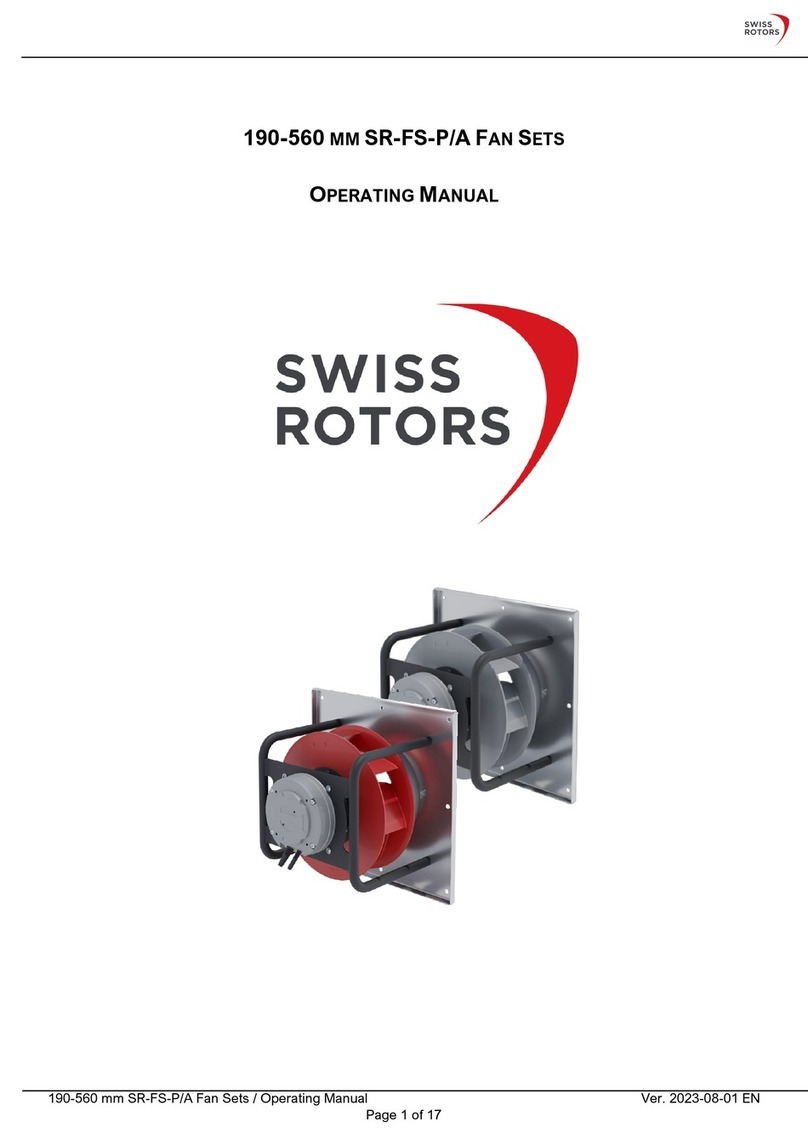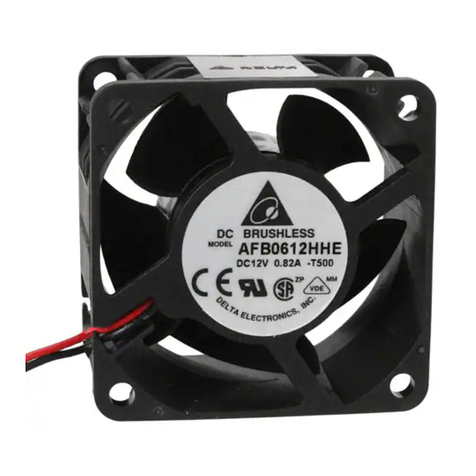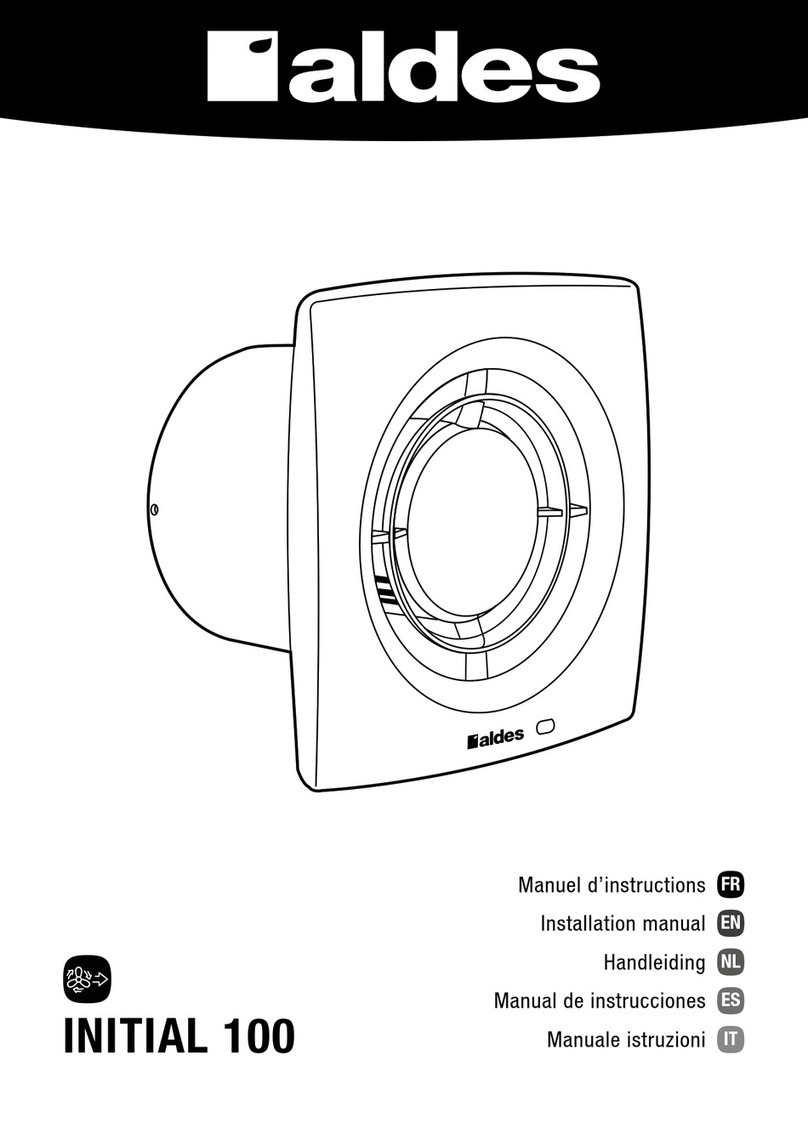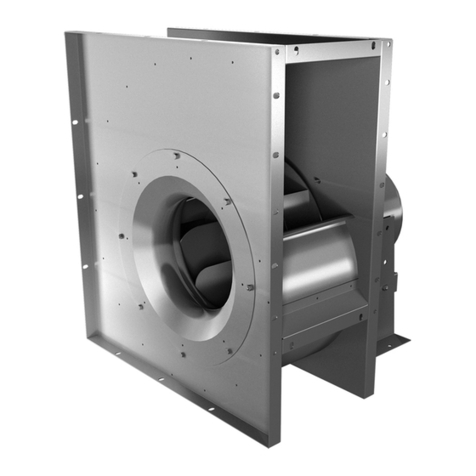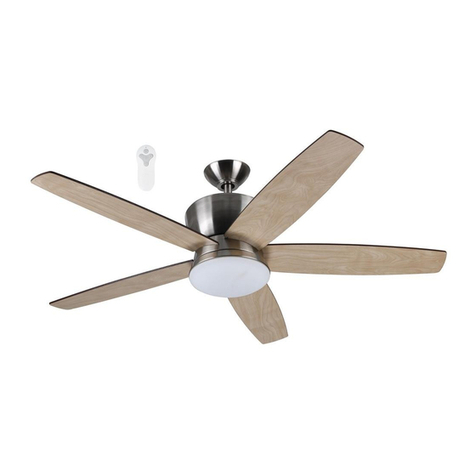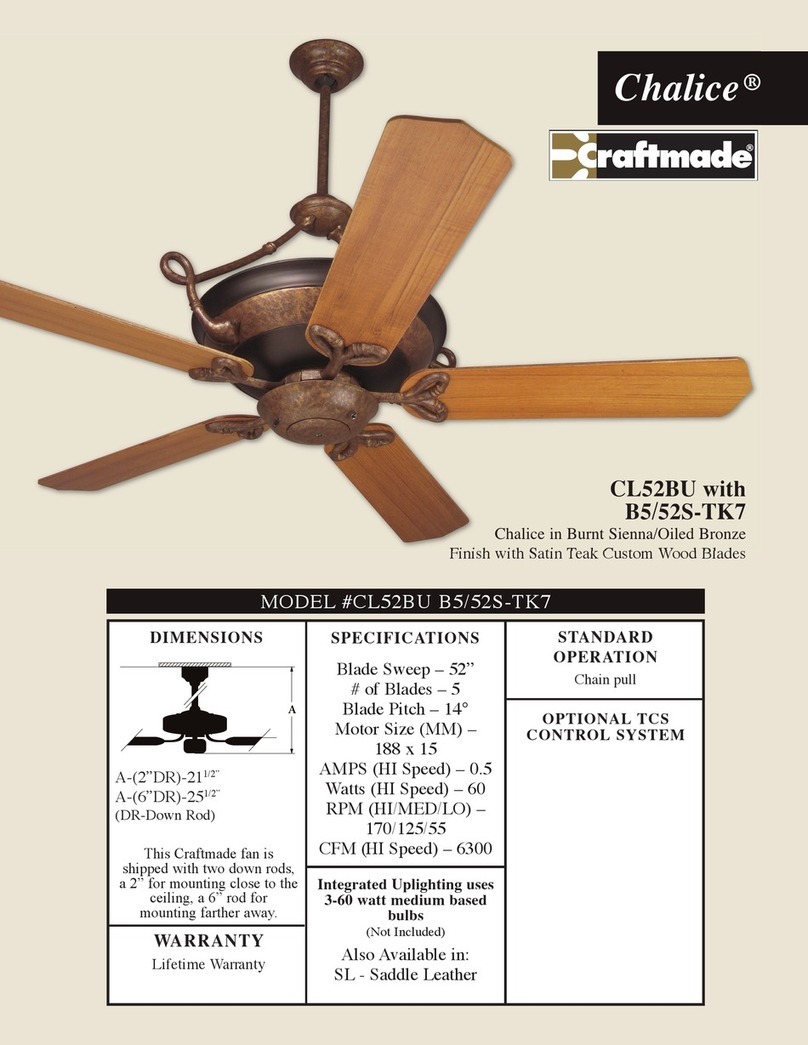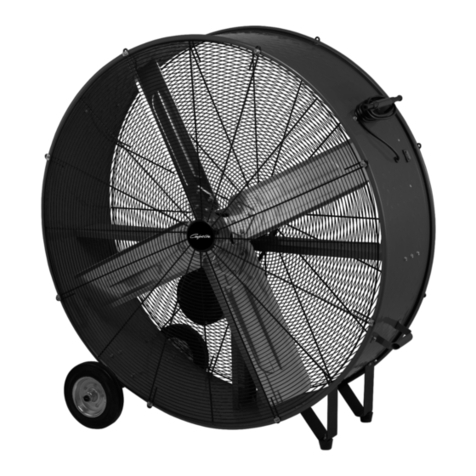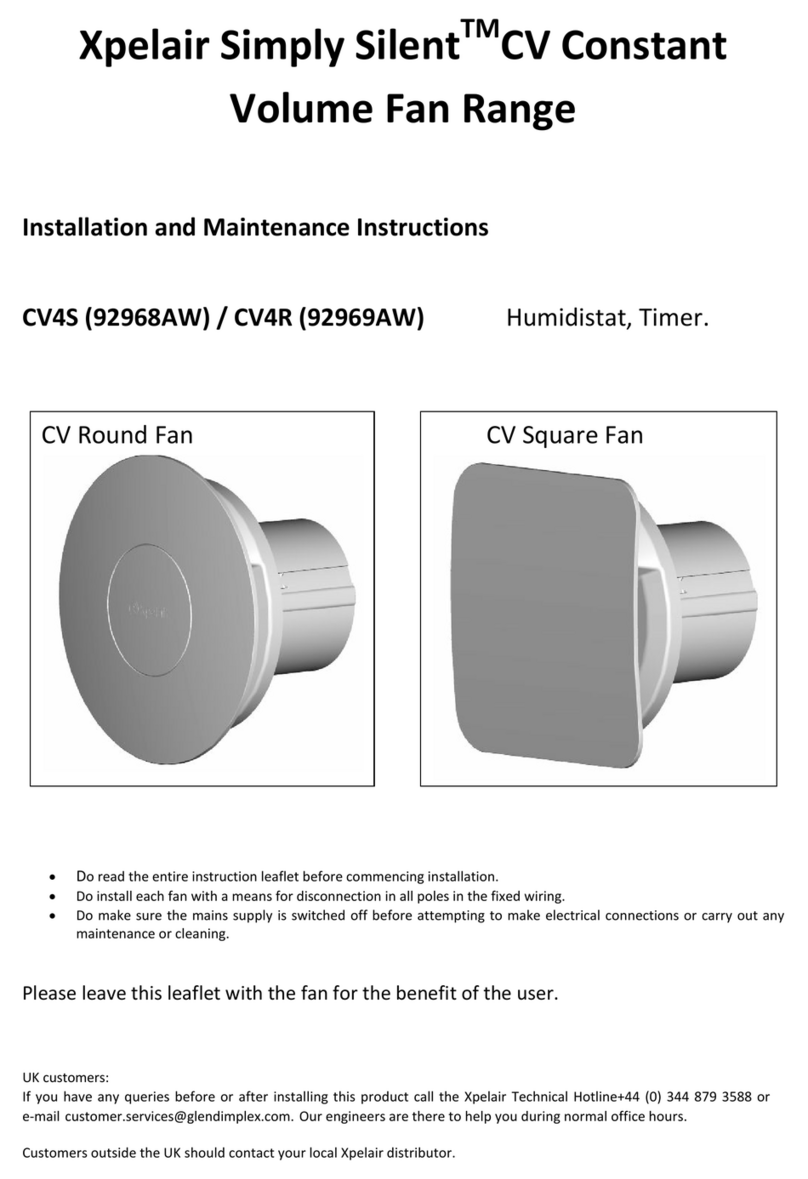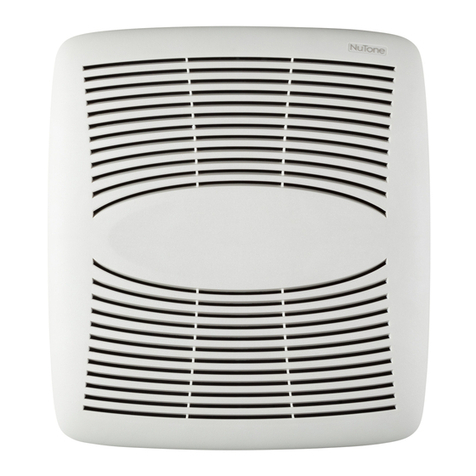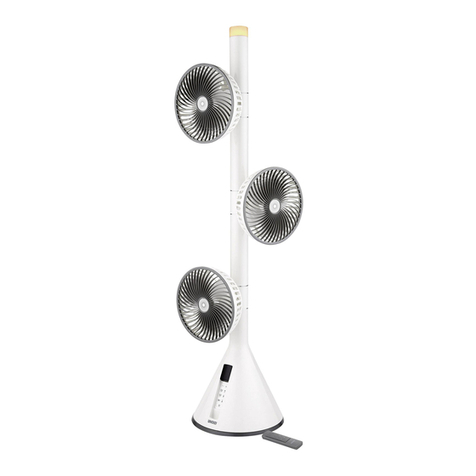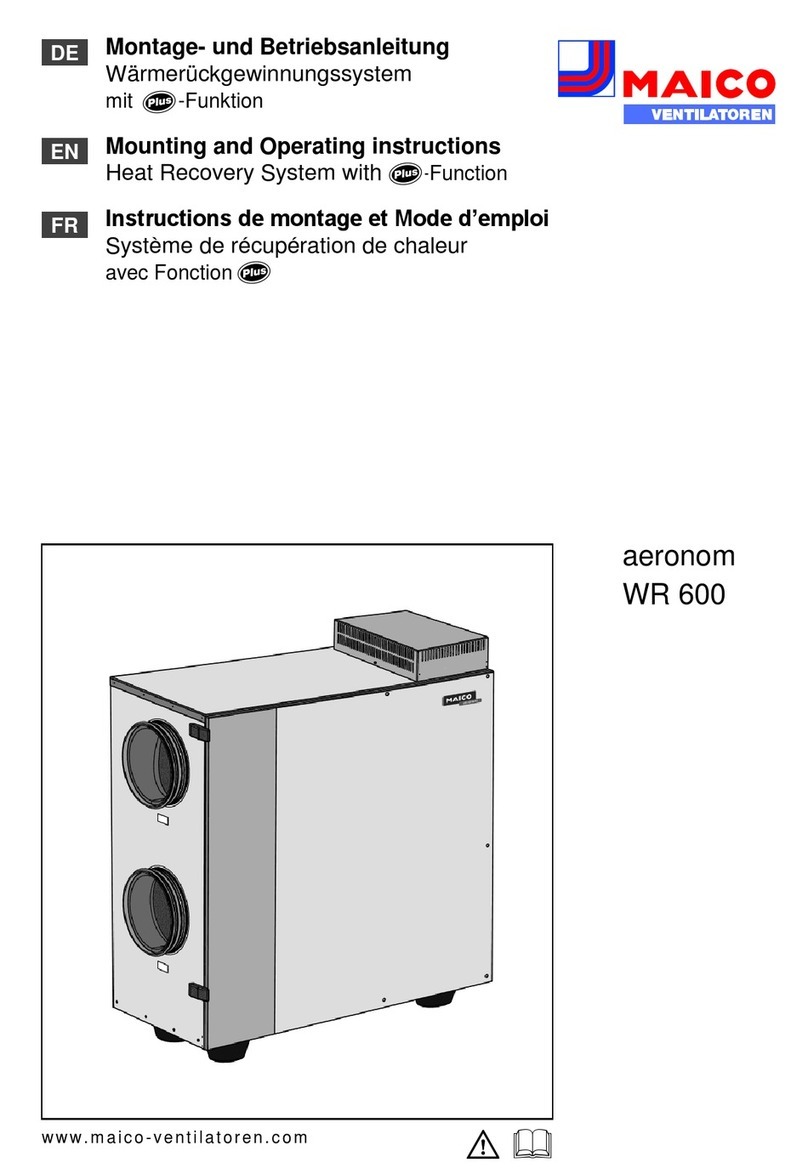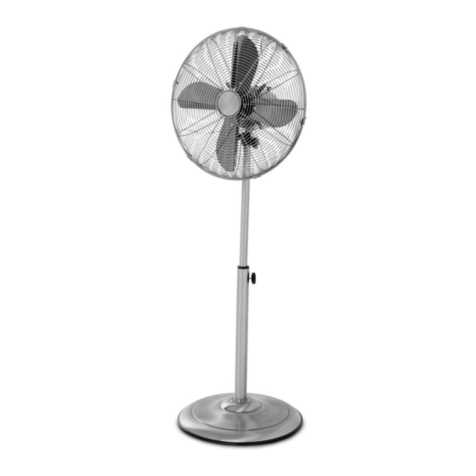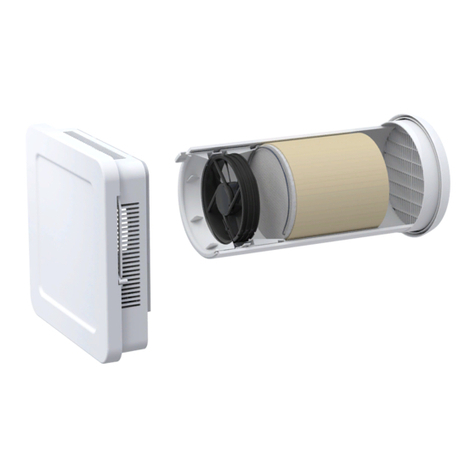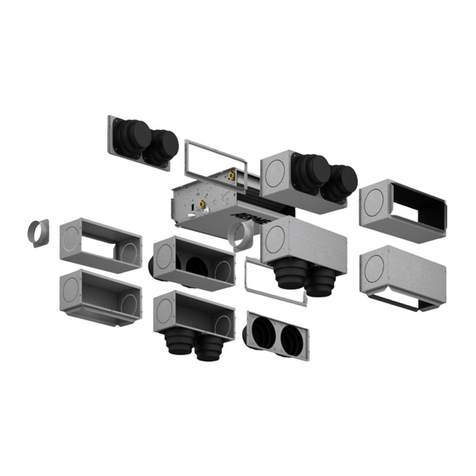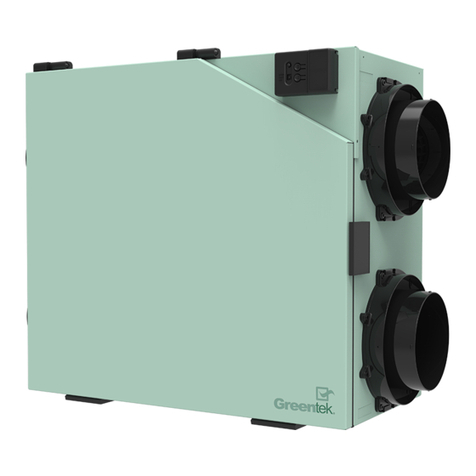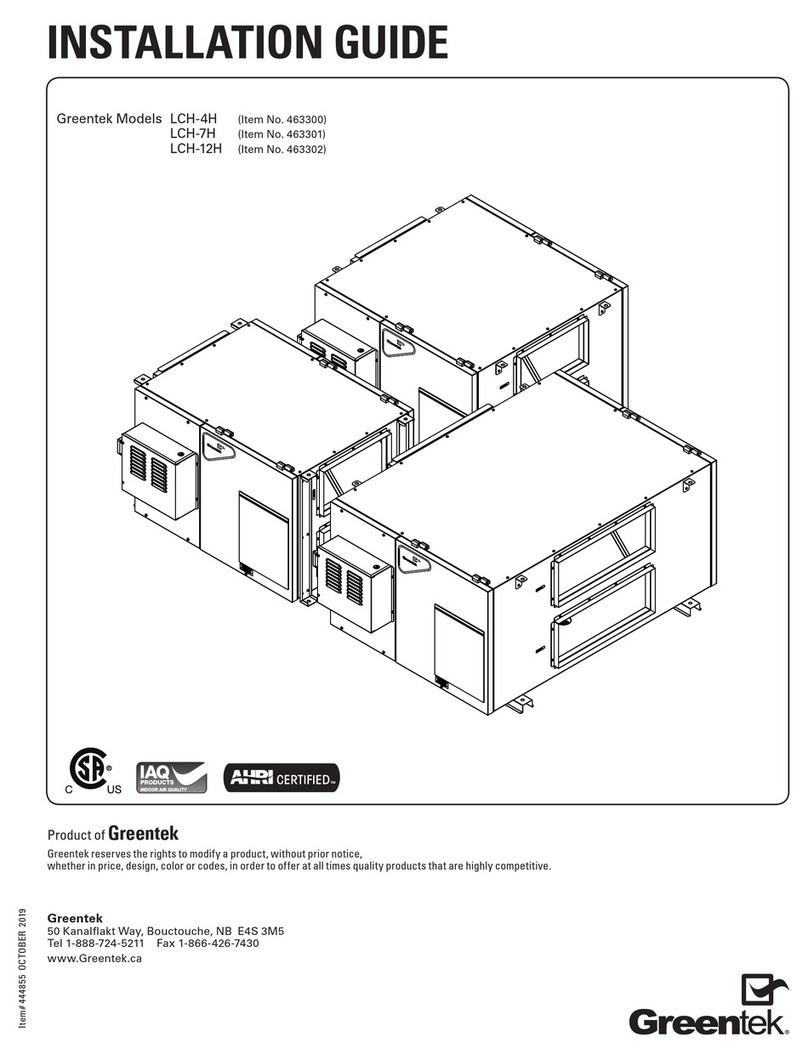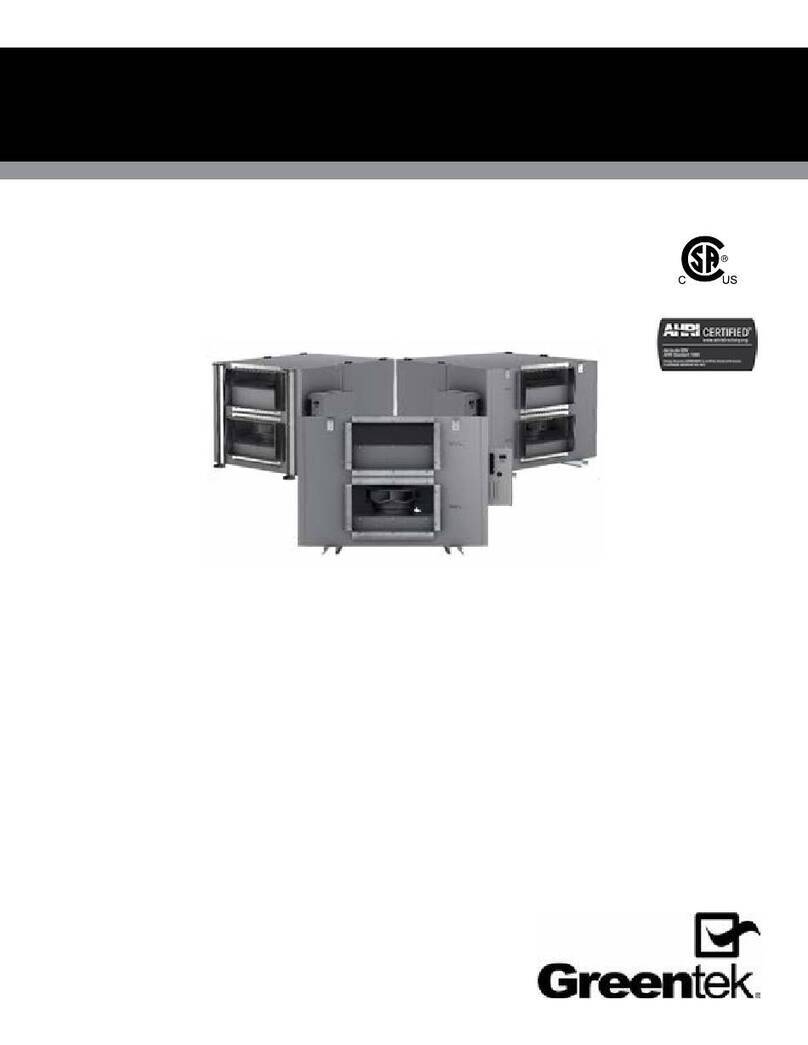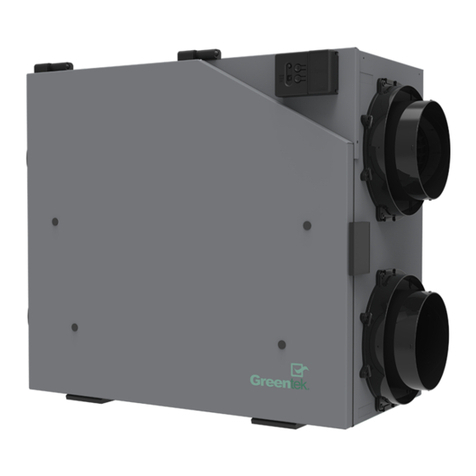
7
6. BALANCING THE UNIT WITH THE DUOTROL™ SYSTEM (LCH-4E & LCH-7E ONLY)
The light indicator shows you in which mode the
DuotrolTM System is in.
GREEN LIGHT Mode Selector
YELLOW LIGHT Balancing Mode
USING THE SELECTOR SWITCH
NOTE TO INSTALLER
When on Balancing Mode, the Selector Switch
allows you to choose the motor you want to set.
Closed Duotrol Cover
1. INTER (Exhaust Motor)
2. CONT (Both Motors)
3. OFF (Supply Motor)
Step 1 Press the (+) and (–) buttons on the Duotrol™ simultaneously
until you see the yellow light. Once the indicator light turns
yellow and the unit goes to high speed you are in balancing mode.
When in balancing mode the selector switch on the Duotrol™
becomes the motor selector switch:
INTER = Exhaust Airflow Motor
CONT = Both Motors
OFF = Supply Airflow Motor
Step 2 To adjust the (fresh air), select the «OFF» position on the
Duotrol™. To adjust the airflow rates, press the (–) button to
decrease or press the (+) button to increase the airflow rates
until you reach the calculated fresh airflow requirements.
Step 3 To adjust the (stale air) select the «INTER» position on the
Duotrol™. To adjust the airflow rates, press the (–) button to
decrease or press the (+) button to increase the airflow rates
until you reach the calculated stale airflow requirements.
Step 4 Once this is completed and you have balanced the airflow rates
required for your application. Proceed to exit the balancing
mode you must press (+) and (–) buttons on the Duotrol™
simultaneously until solid green LED appears then release. The
indicator light will turn green to indicate normal operation mode.
Step 5 Mark down the balanced air flow rates information. Apply the
label to the ERV access door for future reference (e.g. date,
balance airflow rate, your name, phone number and business
address).
Step 6 Once the ERV is balanced, switch to «CONT» on the Duotrol™
By using (+) and (–) buttons you can set the continuous speed if
required.
Note : When selecting the CONT mode: The ERV will continuously exhaust
stale indoor air to the outside and will introduce fresh outdoor
air continuously on low speed except when there is a request for
ventilation by one of the remote controllers then the ventilation system
will exchange at high speed. (Recommended for maximum indoor air
quality.)
When selecting the INTER mode: The only ERV will only run on high
speed when there is a request for ventilation. At this time the unit will
run on high speed until the level of humidity is below the set point. The
T-3 timer has completed its time period or once the cycles per hour has
completed its cycle.
DuotrolTM System
NOTICE: To balance the LCH-12E it will require balancing damper in the ductwork since the Duotrol does not offer this balancing feature at the current moment.
Pitot tube
Magnahelic gauge
Pitot tube
Magnahelic gauge
Note: Insert pitot
tube minimum 18”
from unit, blower or
elbows. The same
applies when using
air flow stations.




















